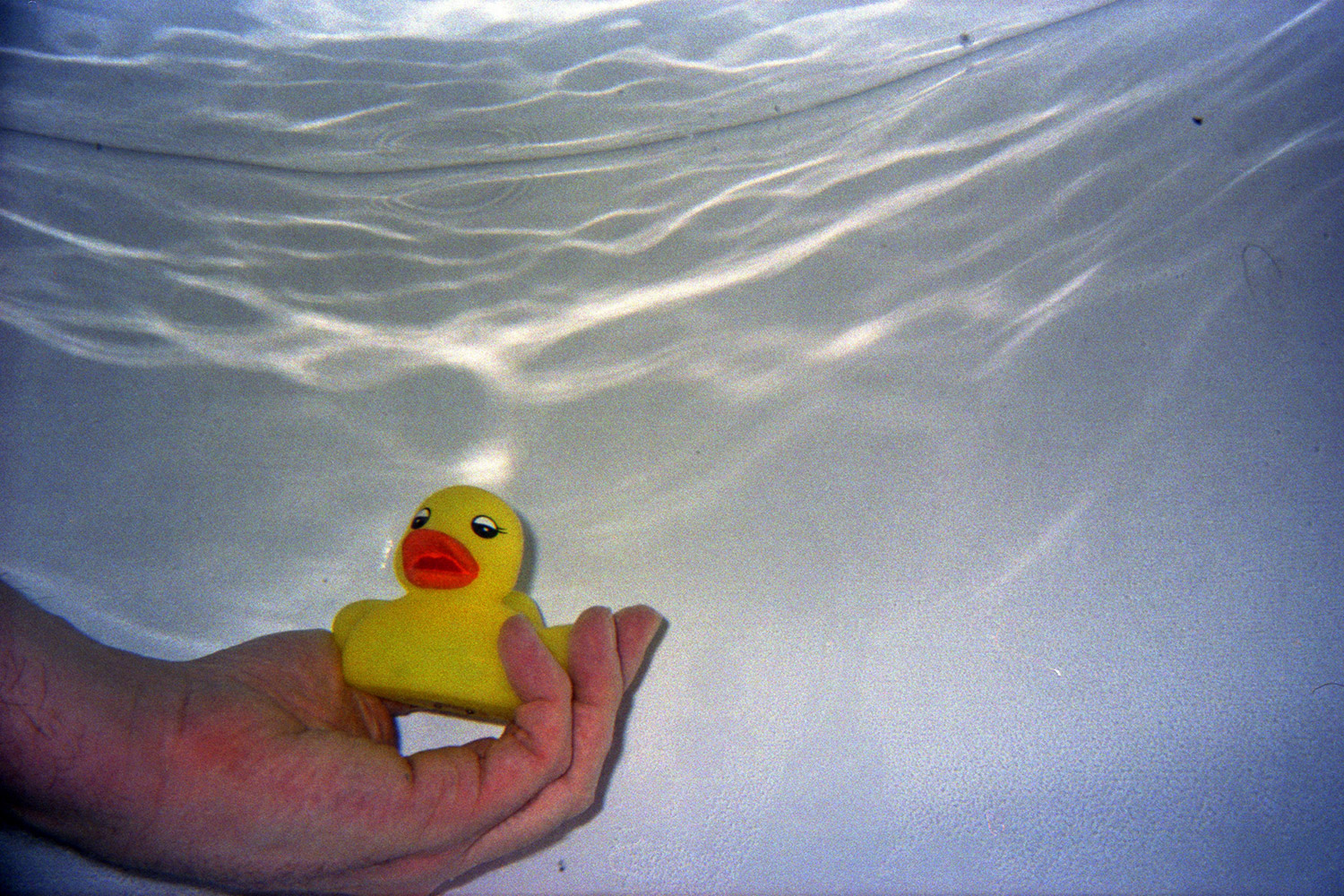Motormarine II
Perhaps it’s because I live in one of the UK’s most land-locked cities, but scuba diving has never really appealed to me. My eye was caught however by this chunky bright yellow amphibious camera in the £10 box at a local camera shop’s annual clear out sale. We’re not short of wet weather in Sheffield, so I thought if nothing else I could use it during one of the city’s numerous and varied outdoor events this year.
The Motormarine II was introduced in 1989 and originally retailed for £299. Like so many film cameras, it has now been rendered obsolete by digital technology, and even speaking as a lover of film cameras, I would be forced to admit that if underwater photography did ever tempt me, I’d go for a digital model. There were no batteries in the camera when I bought it, so it was impossible to know whether it worked or not, but I decided to take a chance, if the worst came to the worst, this “Yellow Submarine” could make an attractive paperweight.
The manufacturers, SEA&SEA, are still in business, and I was able to download a manual from their website, this helped me fathom out how to get into the waterproof battery compartment, which when loaded with a set of AA batteries seemed to show that everything worked OK, though I later discovered that one of the exposure indicator LEDs no longer lights up. For all it’s knobs and dials, it’s really quite a simple camera, with a fixed shutter speed of 1/100th second, and apertures from f3.5-f22. A through the lens exposure meter is coupled to the aperture selector dial, and as the dial is turned, a green LED in the viewfinder tells you when the exposure is correct. I never got the green light, as this one doesn’t work on mine, but it’s not really a problem, you just turn the dial until the red light goes out instead. As well as a built in flash, there is provision for an accessory, more powerful flashgun to be attached, though as I understand it, underwater flash in British coastal waters tends to merely illuminate the fine particles of silt suspended in the water, and if anything obscures the intended subject. As it turns out, murky water was not going to be a problem for me.
I was keen to try the camera with film and the weather forecast was for heavy persistent rain, so this seemed a good time to load it up and brave the elements. There are also a number of fountains and water features which I could photograph from fresh angles without fear of damaging my camera. As luck would have it, a slight change in the meteorological conditions meant that the temperature dropped below zero, and the forecast rain fell as snow, the fountains and water features were frozen up, and my plans looked stymied. I’m quite rigorous in my quest to use a different film camera every week, and having designated my yellow submarine as week 167’s contender, there was no going back. A hastily formulated plan B, involving my bath, and the rubber ducks that share it with me proved to be the way forward. Being a domestic bath rather than the open sea, I was forced to use the built in close up lens, which brings the focus distance down to 50cm. This additional lens lives permanently inside the body, behind the shutter, and is swung into the lens axis by means of a lever on the front of the camera, cleverly this also forces you to use an aperture of f22, which not only maximises depth of field, but prevents overexposure when using the built in flash at such a short distance. It wasn’t until I was drying myself after getting out of the bath, that it occurred to me that this untested second-hand camera could easily have had a leak, and shared some of the high voltage flash discharge with me, luckily all was well, but no wonder the duck has a worried expression on its face!


